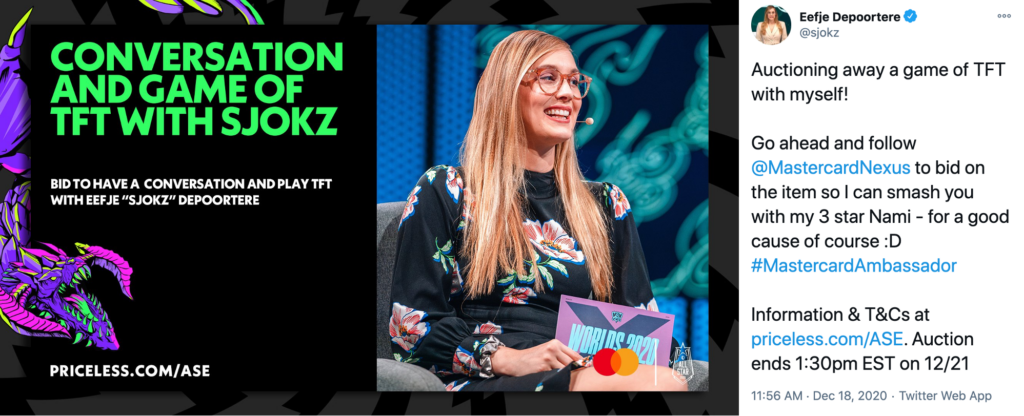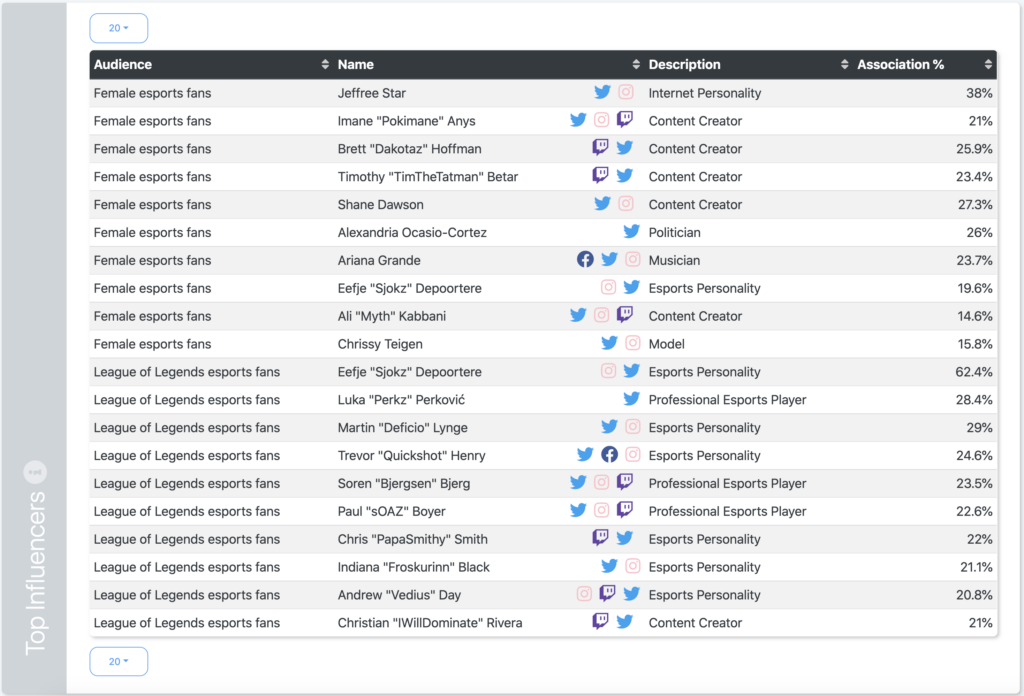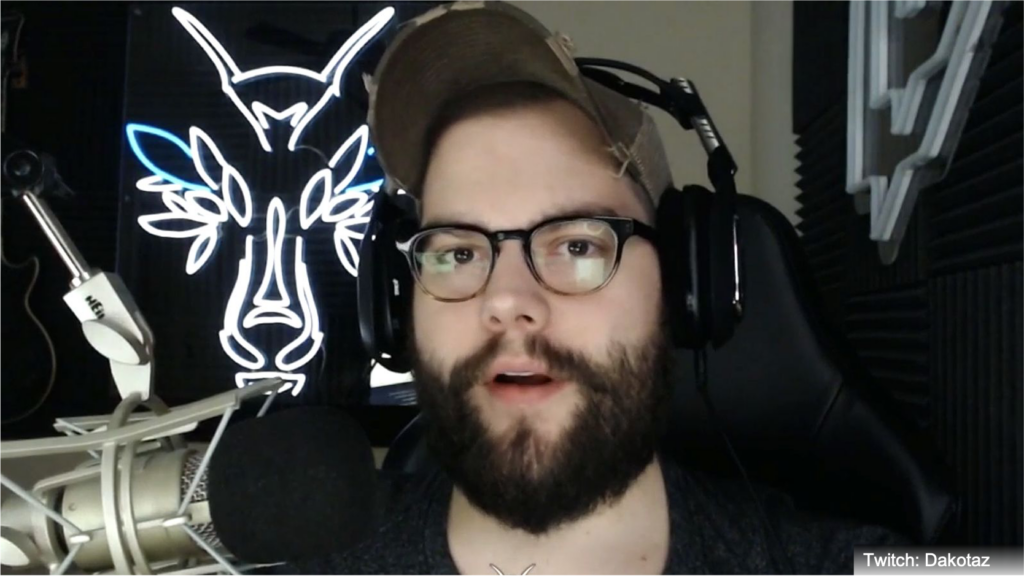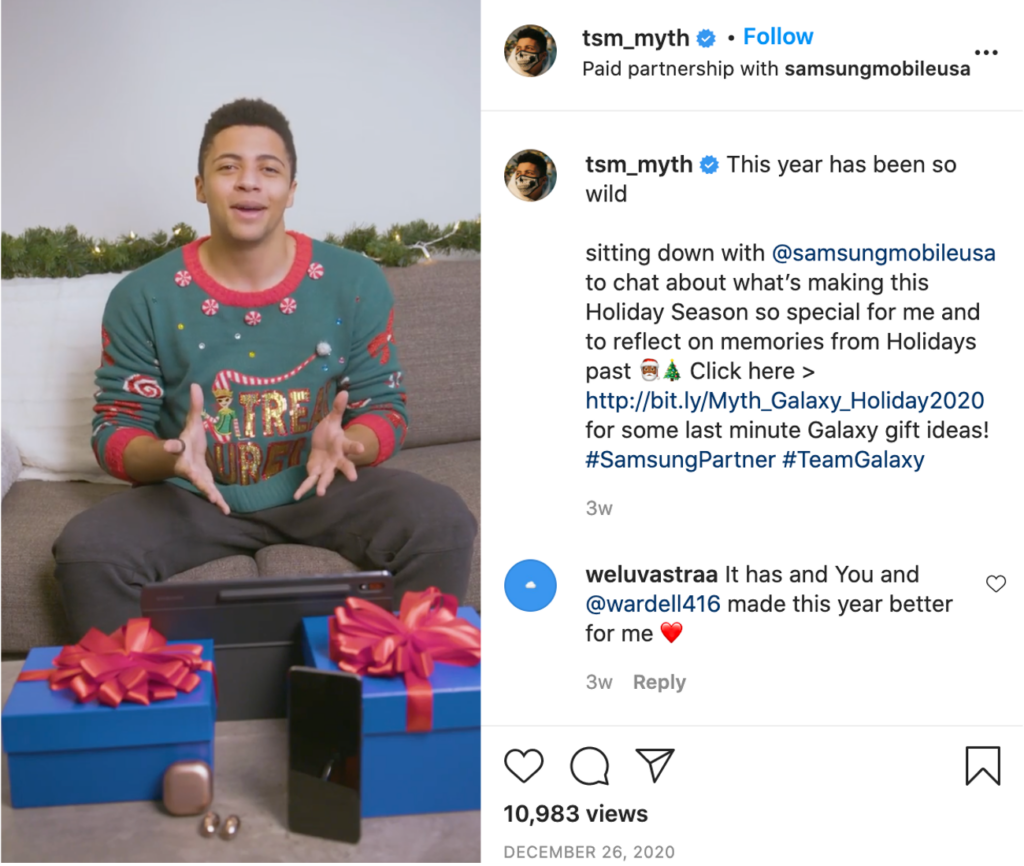This is the third of a four part series. Click here to download the entire report (PDF).
Riot Games’ League of Legends is the world’s #1 esports title. Case in point: The 2020 League of Legends World Championship drew 3.8 million peak viewers and racked up 139 million hours of total viewership. Put in proper perspective; 139 million hours is over 15,856 years of human attention! These impressive numbers have attracted several high-profile brand sponsors.
One such partner is Mastercard. According to eSports iQ analytics, 69% of League of Legends esports fans are likely to use a credit card for shopping and 67% of their financial service brand mentions are positive. So, clearly this is a relevant esports audience.

Additionally, the highest rated influencer for this segment is Eefje “Sjokz” Depoortere – a popular broadcast personality – who made the 2016 Forbes 30 under 30 in Gaming and captured Best Host at the 2020 Esports Awards.
Mastercard is partnering with its global ambassadors to craft unique Digital Priceless Experiences that connect people to their passions. So, it is no surprise that Sjokz was named an ambassador. It is also fitting that three more top 10 League of Legends esports influencers – Trevor “Quickshot” Henry, Indiana “Froskurinn” Black and Andrew “Vedius” Day are in the same program.

Audience segmenting lets you learn about multiple groups within the overall esports community. For instance, eSports iQ analytics show that Sjokz is also popular with female esports fans. Selecting her as a brand ambassador allows Mastercard to speak to more than one audience segment in a way that each of them cares about.
Analytics are your data-driven access to intuitive knowledge that endemic partners, like Riot Games, have amassed from years of experience. Meaning, you do not need to sponsor an esports league just to find the right influencers. Especially since there is no substitute for making sure your campaigns will be promoted by real influencers and shown to real people.
Influencer integration
Fragmentation across the competitive video game landscape means it does not make sense to try to please everyone, at once. It also means you need to clearly define who you want to reach. Once done, analytics show how to best connect with that target audience.
Honda’s gaming initiatives (see below) are strong examples of how to build authentic relationships with esports fans.
- Branded gaming channel on Twitch (Honda Head2Head)
- Official sponsor of the League of Legends Championship Series (LCS)
- Partnership with Team Liquid – a leading North American esports organization
Twitch is a hub for the gaming community and a key platform for connecting with Honda’s target audiences — first-time car buyers under the age of 35. It is also home to a thriving group of video game streamers. One such creator is Brett “Dakotaz” Hoffman, who has over 4 million Twitch followers and is the 6th highest rated influencer for esports fans on Twitch. [Source: eSports iQ audience analytics]

Honda featured Dakotaz, and three other gaming creators, in a Fortnite competition during its 2022 Civic reveal on Twitch. Integrating the right influencer(s) into the campaign allowed Honda to connect to a valuable extended audience: 70% of Dakatoz’s fans also follow esports and 75% of their automotive brand mentions are positive.[Source: eSports iQ audience analytics]
Finding the right influencers for any category is challenging. Even more so in esports, where it typically takes hands-on experience in the community to recognize opportunities. That is why quality data and analytics are so important: They level the playing field. Even though Honda worked with Twitch, influencer marketing in esports does not necessarily require a third-party partnership.
Fun fact: 40% of esports fans on Twitch are likely to be sensitive to ownership costs when buying an automobile, but only 11% are likely to prefer safety. [Source: eSports iQ audience analytics]
Turn to the right channel
Influencers are valuable because they authentically affect purchase decisions. Yet, the competitive video game community is spread across multiple digital platforms, so it is important to find distribution channels that align with your core values. Segmentation by channel can then discover influencers and pinpoint audience behavior.
For example, Ali “Myth” Kabbani is a content creator and top 10 influencer among esports fans who use Instagram – 43% of which are likely to be influenced by social media when making a purchase. The same figure drops to 15% and 18% on YouTube and Twitter, respectively. This underscores the value of Myth’s 7 million Instagram followers vs those on other channels.

Understanding cross channel consumer behavior helps your esports influencer campaign strategy. Especially since many leading influencers have large audiences on multiple platforms – Myth has 2MM+ Twitter and 4MM+ Twitch followers. Quality data and analytics illuminate buying behavior, brand perception and purchase tendencies. All of which help decide the type of campaign that best fits your target audience.
This is particularly important if you are new to the world of esports and gaming. Finding esports influencers already active on a familiar platform opens the door to a relationship, where you can learn more about their community.
Fun fact: Esports fans on Instagram are three times more likely to be influenced by online ads than those on YouTube. [Source: eSports iQ audience analytics]
This is the third of a four part series. Click here to download the entire report (PDF).
